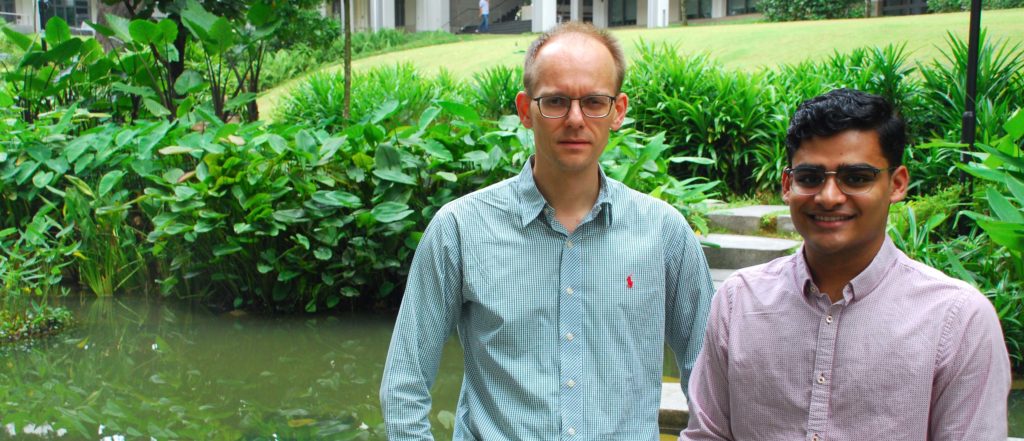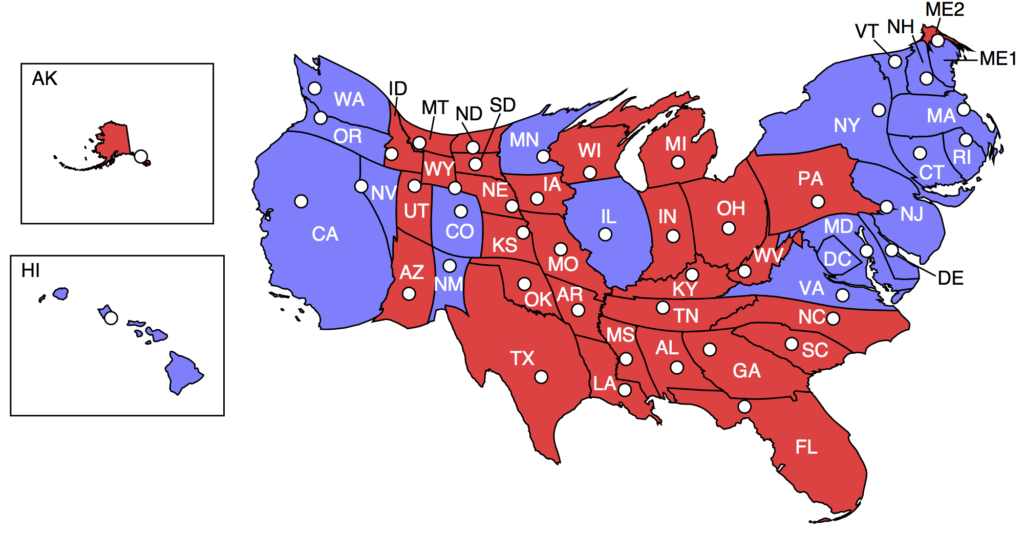Yale-NUS faculty member and student collaborate on cartographic research

Assistant Professor of Science Michael Gastner and Class of 2018 student Pratyush More. Image by Kimberly Hoong.
A core aspect of the Yale-NUS model of education is its innovative curriculum that integrates knowledge across the disciplines. This emphasis on interdisciplinary thinking spans both classroom learning and faculty research.
An example is the cartographic research conducted by Assistant Professor of Science (Mathematical and Computational Science) Michael T Gastner, who recently published an article in the prestigious Proceedings of the National Academy of Sciences (PNAS) titled “A fast flow-based algorithm for creating density-equalising map projections”.
The article was co-authored with Pratyush More (Class of 2018) and Viven Seguy from Kyoto University.
Dr Gastner explained that the research focuses on cartograms, which are “maps that are distorted in such a way that the areas are proportional to population size, Gross Domestic Product (GDP) or any other statistical variable.”
Cartograms are used widely in different areas of research, such as geography, statistics and the social sciences. This is because, Dr Gastner explains, equal-area maps can “grossly misrepresent demographic data”.
“In many statistical contexts, densely populated cities should be given more visual prominence than large, but sparsely populated territories. Cartograms solve this problem by deliberately rescaling map regions according to the quantities that actually matter.”
Essentially, cartograms help to represent data in a more meaningful way. An example cited in the PNAS article was on mortality data in Kensington and Chelsea in London between 2011 and 2014.

A cartogram of the United States Electoral College Vote 2016. Image provided by Michael Gastner.
Besides these interdisciplinary applications, Dr Gastner added that the inspiration for this new method came from a different discipline – the physics of fluid dynamics.
“Physics is a great toolbox for solving mathematical problems. I was myself trained as a physicist, but now am teaching in mathematics and computational science,” he noted.
Dr Gastner is no stranger to interdisciplinary research. Prior to joining Yale-NUS College, he was postdoctoral fellow at the Santa Fe Institute, a multi-disciplinary research centre devoted to the study of complex systems.
“For the method described in the article, our metaphor was to treat population as a fluid that must flow in such a way that ultimately, the density is equal,” he explained.
“By thinking of the map as a petri dish covered by a thin layer of water, we can model the population by injecting particles into the ‘water’ layer with spatially varying concentrations. In the long run, the probability of finding a particle becomes a constant everywhere inside the dish.”
“We can make a cartogram by translating this simple physical model of density equalisation into a geographic map projection. The challenge then breaks down into solving known equations from physics rather than coming up with new abstract mathematical rules,” he added.
Dr Gastner previously co-authored a PNAS paper in 2004 as a graduate student at the University of Michigan, where he developed an older method that has since been widely adopted. However, he noted that it still needed “typically several minutes of computer time to calculate a solution.”
“This PNAS article proposes an alternative method that solves the problem within only a few seconds on a standard computer,” he shared.
Dr Gastner shared that in addition to carrying out the research, Pratyush also assisted with developing and parallelising the computer software.
This new method, apart from engendering algorithmic efficiencies, also enables the computation to be “broken up into smaller chunks that can be solved independently and simultaneously on different cores of the computer’s processor”.
“Because processors with multiple cores have now become common even for standard home computers [as compared to in 2004], parallelisation can in practice substantially accelerate the calculation,” Dr Gastner explained.
On future plans, Dr Gastner hopes to develop a web application that anyone can use to make their own cartograms which can meaningfully and visually present statistical data.





